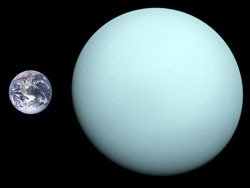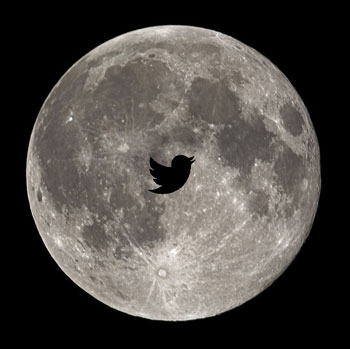
On October 15 the planet Uranus will reach its maximum brightness for 2016. But even if you can’t observe the 7th planet from the Sun that night, you can get a good look all month. So pull out your telescope or binoculars and take a peek! Uranus will be relatively easy to spot October 15 as it will appear next to the Moon as a fairly dim ‘star.’ If you can’t view Uranus on the 15th you can use our Virtual Planetarium astronomy software to find it on other nights this year. This gas giant is in the Name A Star Live constellation Pisces.
Through a telescope Uranus will appear as either a grey circle or a faint blue-green dot, depending on whether you have a small or large telescope, respectively. The planet is so far away that the light you’ll see through your telescope or binoculars will take four hours to reach you. That translates into a distance between Earth and Uranus of 2.7 billion miles, or 4.4 billion kilometers.

On October 15 the planet will be at “opposition,” meaning that, as the sun sets in the west that evening, the planet will rise in the east — on the opposite side of the sky as the Sun. That’s because at that time Earth will be directly between Uranus and the Sun.
Uranus has 27 known moons, including its famous five large moons, which were discovered before the space age. The remaining 22 were discovered by Voyager 2 and the Hubble Space Telescope. While most of the satellites orbiting other planets take their names from Greek mythology, Uranus’ moons are unique in being named for Shakespearean characters, along with a couple of the moons being named for characters from the works of Alexander Pope.

The planet was discovered in 1781 by the British astronomer William Herschel, who initially thought the planet was a comet. Once he realized what he had actually discovered, Herschel wanted to name the planet “Georgium Sidus” (George’s Star), after King George III. But astronomers decided instead to name the planet after the Greek god Uranus, the husband of Gaia — Mother Earth.

Get our Moon Tweets!

Did you know you can use the Moon to identify where your star’s constellation is in the night sky? Follow us on Twitter where we let you know when the Moon appears in a Name A Star constellation (area of the night sky).
Name A Star Live offers some really good tools to learn about the night sky and find your star’s constellation. Visit our website to learn about our Virtual Planetarium software, planisphere constellation finder, and First Light Astronomy Kit!